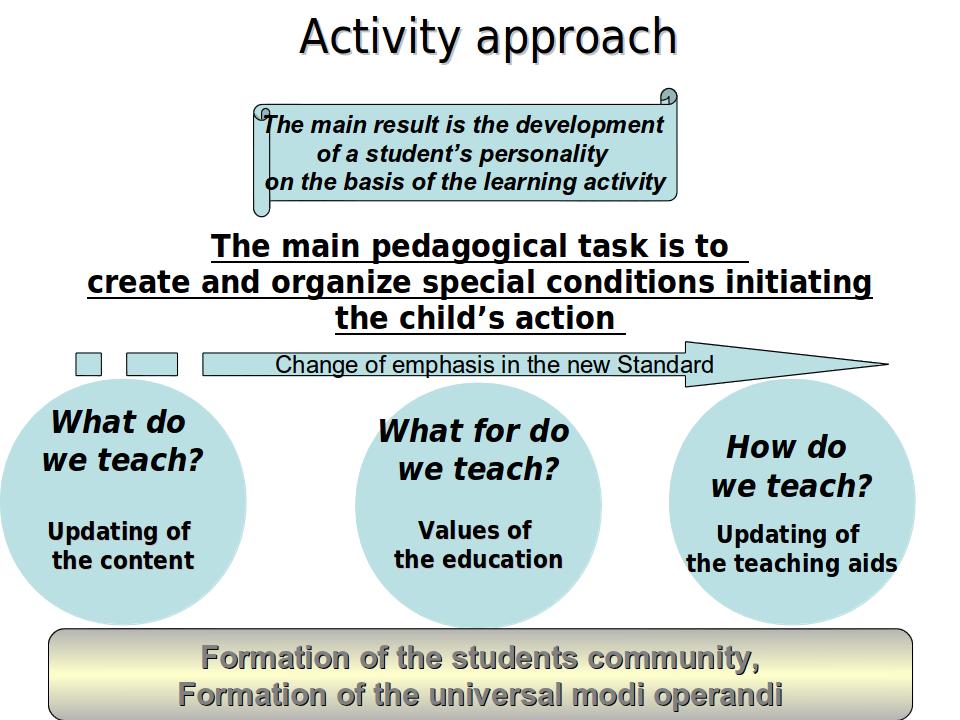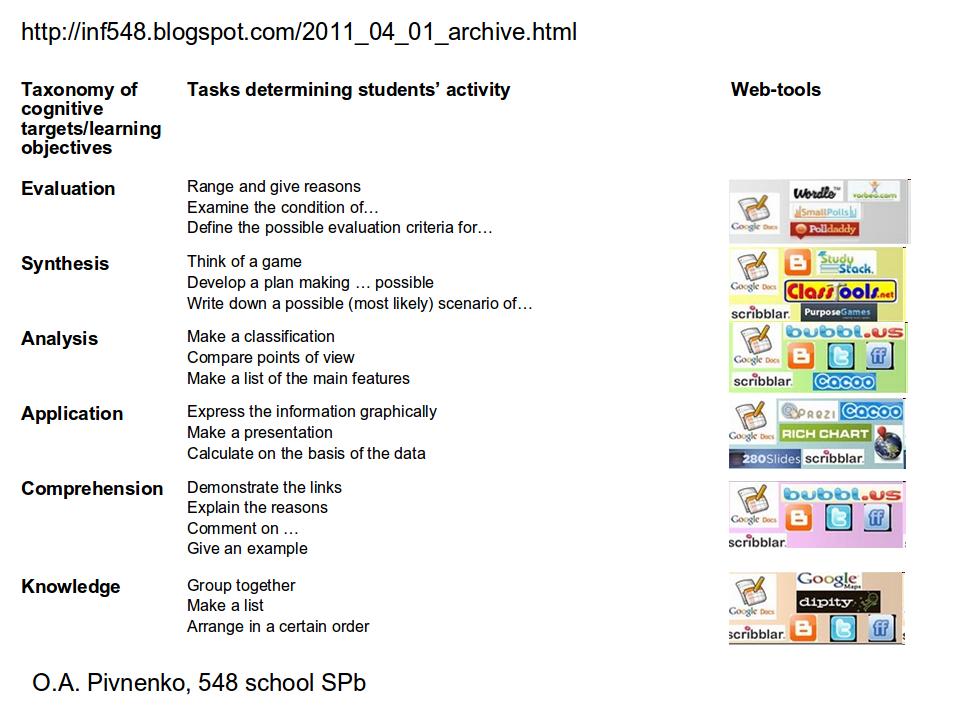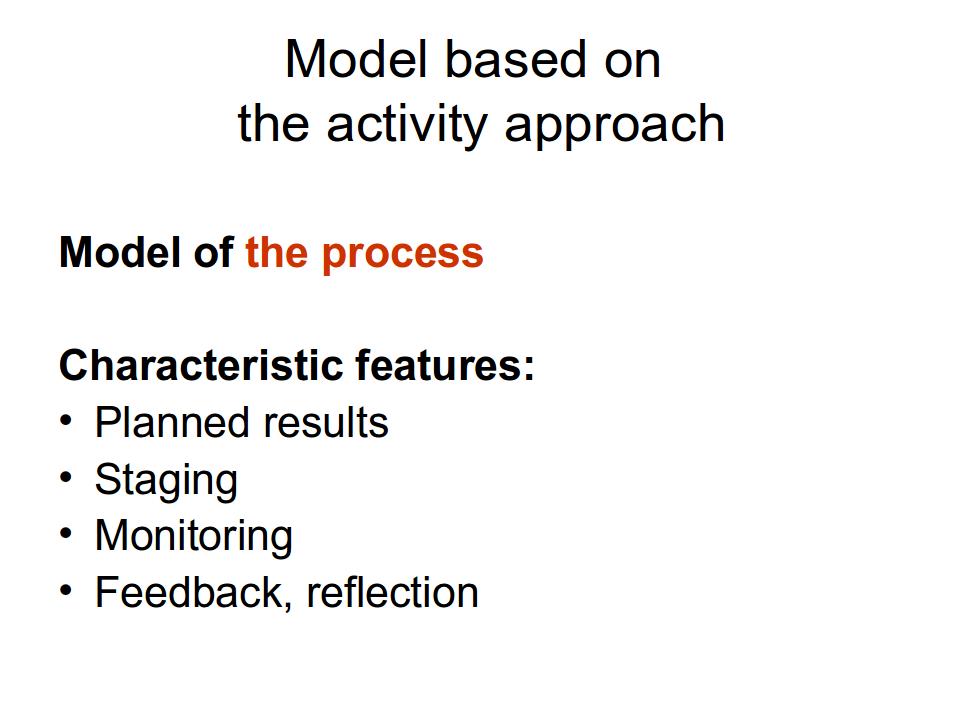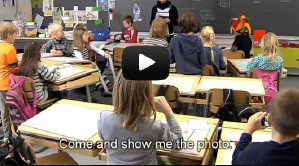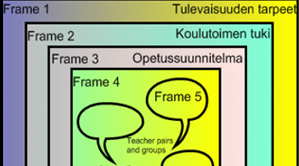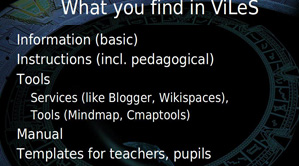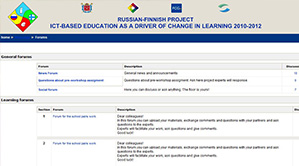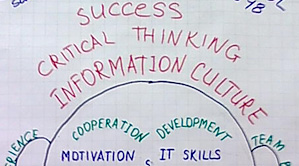Developing school-based digital learning materials and resources with the view to existing materials and their relevance and appropriateness
Explore and compare existing digital learning materials and resources and rate their fitness and potential for your purposes. Remember the Six Ps
Pay special attention to what kind of studying and learning context and activity they provide to learners. Use Activity Approach as Pedagogical Model for digital learning material use and creation as your reference.
Consider Six Ps Guiding questions
Polyfunctional
- Capacity building
- Adaptability
- Variation
Pedagogical use of ICT
1) How does the project relate to the professional development plan on ICT of your school?
2) What are your school team's and your own learning needs in ICTs?
3) Have you got any previous experience of learning material /resource development and authoring?
4) What kind of support do you need in authoring?
Flexible pedagogical framework
1) For what kind of purposes can the material/resource be used in the T-S-L process or in your school?
2) Have you considered offering your material/e-resource concept to a broader network, a resource bank, or a publishing house?
3) Do you have any contacts with publishing houses, or other commercial bodies that might be interested in your material/e-resource concept?
Making the T-S-L culture and process visible
1) Are there clearly defined criteria for assessing student learning or your school's performance available for everyone? What are they? How is assessment carried out in your school? Are ICTs used? How?
2) Do you feel that the available criteria and assessment practices are useful and up-to-date, and can be applied to the new e-resource you are going to produce, or would you like to revise them? What makes them useful? What do you feel would need to be changed?
Choosing pedagogical approaches / models, methods, technology and forms of assessment
Have a look at O. A. Pivnenko's solution Web Tools in teaching, studying and learning from School no 548, St. Petersburg, and use it as your reference. The solution combines the pedagogical model, learner activities and technology.
Read more about DLM as dynamic learning environments
Consider Six Ps Guiding questions
Polyfunctional
- Capacity building
- Adaptability
- Variation
Pedagogical use of ICT
1) How can the teacher support, facilitate and guide the students' progress towards the objectives when using your e-resource / DLM?
2) How can the class support, facilitate and direct their progress towards the objectives while working with your e-resource / DLM?
3) What in your e-resource / DLM supports, facilitates or guides students to build and practice their citizenship skills (see below) set out in the national curriculum, current or under review?
Flexible pedagogical framework
1) What kinds of content can be inserted into your e-resource / DLM?
2) Which
- instructional strategies,
- working methods and
- activities or tasks
do you find most appropriate while using your DLM?
3) Which forms of assessment and feedback do you find most appropriate to ensure maximum student learning while working with your e-resource / DLM?
4) Which new T-S-L avenues and opportunities does it open for future development?
Making the T-S-L culture and process visible
1) Have you presented your e-resource to your school? What do the comments of your colleagues focus on?
2) Does your e-resource / DLM create new professional development needs?
- How will your school cope with them?
3) Are there any new development processes emerging in your school at the moment? What are they?
Organising and monitoring a digital learning material/resource development process
Make a plan to organise and monitor your digital learning material or resource development, and production process. Use Template 3. Work plan for organising and monitoring the development and production process of the digital learning material or resource.
Also, consider the following points during the development and production process:
The process
- starts from what there is already in your school, and builds on it.
- uses clear and concise language
- supports collective activity
- recognises that there are different ways to get things done
- responds to emerging needs
- fosters continuous assessment and reflection.
Use Activity Approach-based model as your reference when creating your plan.
Consider Six Ps Guiding questions
Purposeful
- Identification of a problem or need in current practice
- Goal setting
- E-resource can be used for different purposes
Pedagogical use of ICT
1) How do you organize your work on the development of DLM:
- How will you overcome the difficulties encountered?
- What activities should be carried out in a development team for the successful development of DLM?
2) What kind of results do you wish to receive:
- How can you use DLM in the classroom?
- What evaluation tools are needed to test the achievement of students using DLM?
3) Do you have access to basic documents (standards, sample curriculum of academic subjects, programs of your school, etc.)?
Flexible pedagogical framework
1) What in your DLM is interesting to teachers of different subjects?
2) Why is your DLM significant for students? How did using it change their learning activities?
3) What does your DLM add into the school environment?
Making the T-S-L culture and process visible
1) Which previously developed materials helped you create DLM?
2) What changes are taking place within students along the use of DLM?
- How is the personal development of students coming?
- How does the learning activity of students change?
- How do students "see" their own changes with the use of DLM?
3) How do teachers and students interested in your DLM understand the results achieved?
